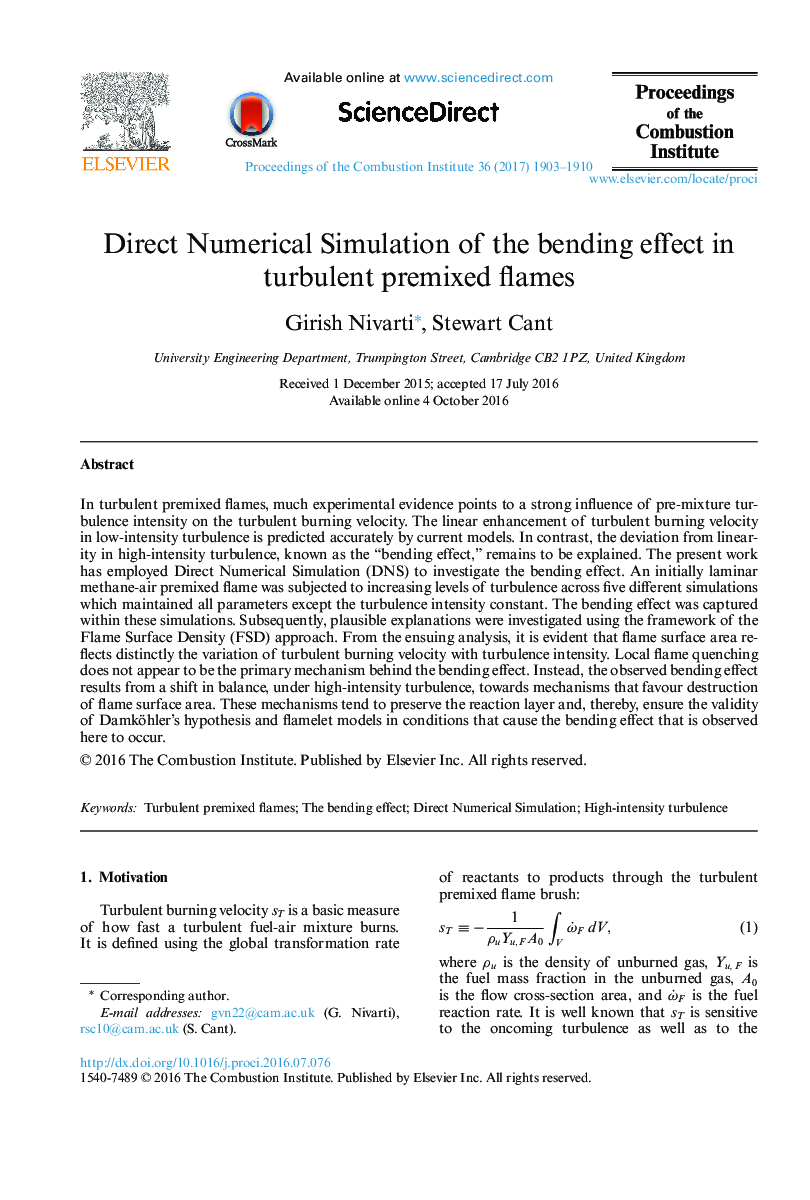| Article ID | Journal | Published Year | Pages | File Type |
|---|---|---|---|---|
| 6478138 | Proceedings of the Combustion Institute | 2017 | 8 Pages |
In turbulent premixed flames, much experimental evidence points to a strong influence of pre-mixture turbulence intensity on the turbulent burning velocity. The linear enhancement of turbulent burning velocity in low-intensity turbulence is predicted accurately by current models. In contrast, the deviation from linearity in high-intensity turbulence, known as the “bending effect,” remains to be explained. The present work has employed Direct Numerical Simulation (DNS) to investigate the bending effect. An initially laminar methane-air premixed flame was subjected to increasing levels of turbulence across five different simulations which maintained all parameters except the turbulence intensity constant. The bending effect was captured within these simulations. Subsequently, plausible explanations were investigated using the framework of the Flame Surface Density (FSD) approach. From the ensuing analysis, it is evident that flame surface area reflects distinctly the variation of turbulent burning velocity with turbulence intensity. Local flame quenching does not appear to be the primary mechanism behind the bending effect. Instead, the observed bending effect results from a shift in balance, under high-intensity turbulence, towards mechanisms that favour destruction of flame surface area. These mechanisms tend to preserve the reaction layer and, thereby, ensure the validity of Damköhler's hypothesis and flamelet models in conditions that cause the bending effect that is observed here to occur.
